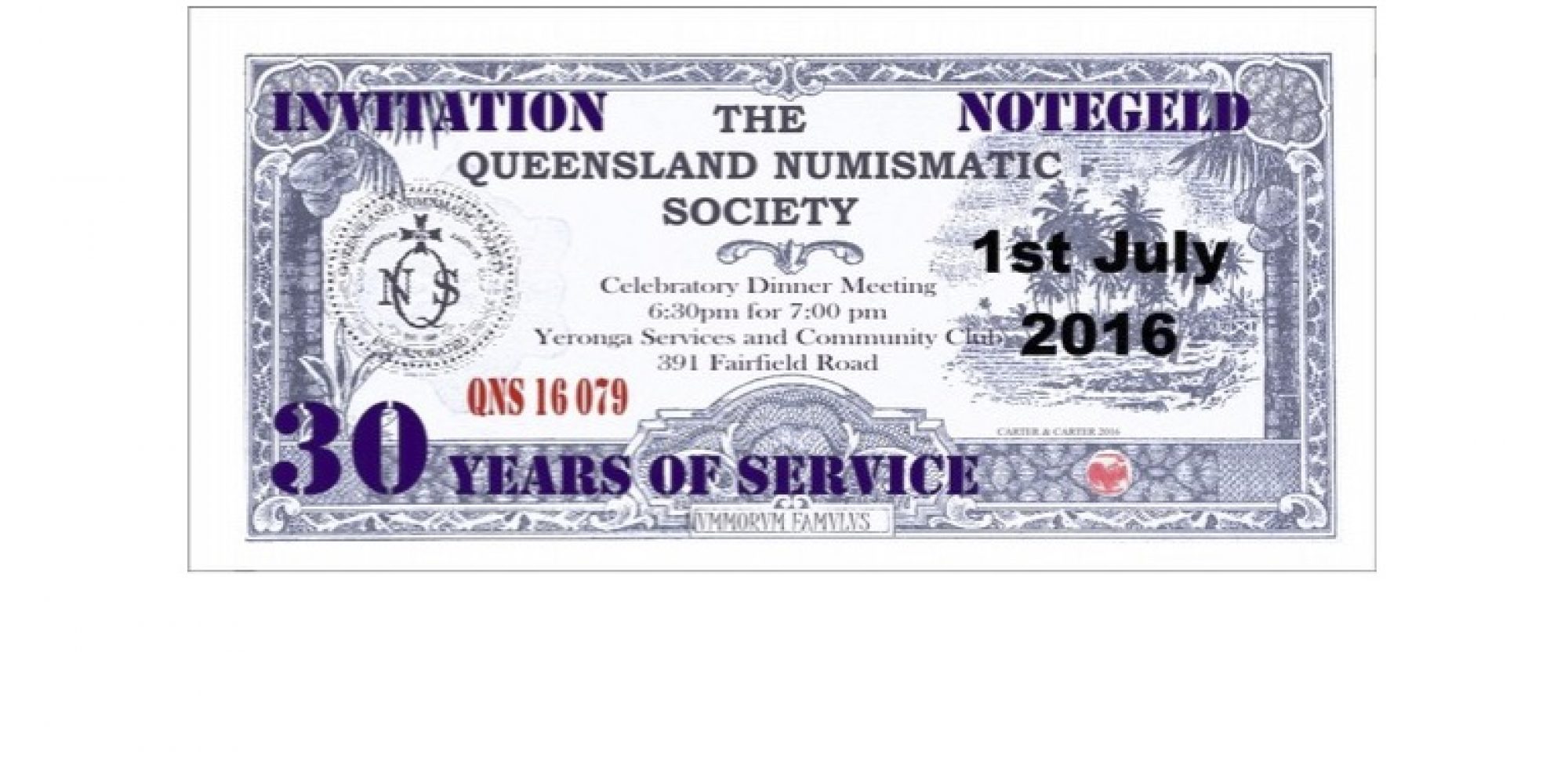by Stephen Appleton
The full name and title of the monarch of the United Kingdom of Great Britain and Northern Ireland is, like like most other European monarchs, somewhat long and grandiose – you would need a magnifying glass to read it if it were placed on a typical circulation coin in it’s entirety. Coin designers have therefore always had to abbreviate it, only including what seemed to be the most important parts. Until the reign of Queen Elizabeth II, the shortened title, as authorised for use on the coin of the realm, was: “(the monarch’s name and number), by the Grace of God King (or Queen) of all the Britons, Defender of the Faith, Emperor of India (until 1947)”. Latinized and further abbreviated, in imitation of the coins of ancient Rome, this usually appeared as some variant of:
XXXXXX X D:G:BR:OMN:REX(or REG)FID:DEF:IND:IMP
Over the years the titles which appeared on the coins changed, for various reasons. For example, the title “King of France” was dropped after the French Revolution and “Emperor of India” was dropped after Indian independence. Rarely if ever were such alterations even noticed by the coin-using public.
However, the title alterations which were noticed, often with considerable public outcry, were those pertaining to the religious aspects of the monarch. D:G:, short for DEI GRATIA indicated to all that it was God who put the monarch on the throne, so only God should be allowed to remove him or her – doctrine of the divine right of kings, and all that.
FID:DEF stood for FIDEI DEFENSOR, and was originally a title bestowed on Henry VIII by the Pope prior to the Anglican Schism. Subsequent monarchs liked the sound of the title and used it – much to the Vatican’s disapproval – as a reminder on the coinage that he or she was the head of the Church of England.
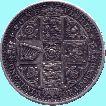
The first occurrence of what I call “agnostic coinage” – coins with such references to God omitted or deleted – occurred in 1849, when the Royal Mint introduced a new denomination to the British public – the florin. (Fig. 1).

Apparently it was an attempt to introduce some degree of decimalization to the British currency, as 2 shillings is one-tenth of a pound – the new coin even said as much around the lower reverse rim. As revolutionary as this idea of a decimalized pound seemed, it was what the coin did not say which really upset people, for the obverse design (Fig.2), completely revised for the new coin, merely stated VICTORIA REGINA 1849. No mention of God’s Grace or Defending the Faith.

Scandalous! Amid cries of treason, sacrilege and Red Republican Conspiracy, the coin issue was halted after a mintage of 413,820 as the chastised designers, apparently at the Queen’s insistence, reworked the florin, eventually releasing the “Gothic” type in 1851 (Fig.3), with full Latin legend, including D:G: and F:D:, in ultra-traditional archaic script – similar, in fact, to the proof crowns of 1847 – and even the date used Roman numerals! The florin of 1849 became known as the “Godless florin” and every subsequent British coin issue has not failed to include both these elements of the royal title.

The second incident occurred in Canada at the beginning of the reign of George V. The coins of the previous king, Edward VII, bore a design similar to that which Canadian coins had used since confederation (Fig. 4).

But the new coin dies, sent from the Royal mint to the then-recently opened (1908) branch mint in Ottawa, had a curious omission – from the 1¢ to the 50¢, all of the dies had the legend GEORGIVS V REX ET IND:IMP, without the customary DEI:GRA: (Fig. 5) Canadian coin legends had never included FID:DEF, perhaps because only a small percentage of the population was Anglican, but they had always included DEI:GRA. This omission is especially curious as neither the homeland coins nor the coins issued for any other colony (such as Australia) received similar deletions at this time.

Well, if Anglicans were a minority in early 20th century Canada, it seems that God-fearers were not – for there was a repeat of the outcry and public criticism of the Mint like that which occurred back in Britain 60 years earlier. A redesigned obverse with the required additions was used for the coin issues of 1912 onwards. Canadian collectors call the coins of 1911 the “Godless series”, although it might also be called the Graceless series. And just like Britain, Canadian coins to this day do not forsake the inclusion of the letters D:G (Fig. 6).
The third incident of agnostic coinage was much closer to home, in time as well as distance, for it happened here in Australia in the 1950’s with our notorious “Godless” coins (or, to be precise, “Faithless” coins, since DEI GRATIA remained prominent). This time, it may have been more of an accident than the previous two occasions, as the omission of FID:DEF from the coins seems to have a logical explanation.
When Queen Elizabeth came to power, Australian mints ordered new dies with similar titles to those which were used on George VI’s coins. However, between her accession and her coronation, a Commonwealth Economic Conference had met, at which it was decided to modernize the Royal Titles, making them more relevant to each particular country in the Commonwealth. One outcome of this was that the “BR:OMN” was deleted, in response to the ever-increasing number of “Britons” no longer in her kingdom (particularly the Irish). This would therefore need to be deleted from the coins. Thus we find 1952 British coins have Elizabeth II BR:OMN obverses, 1953 and subsequent all have BR:OMN deleted.

Now, the Latin legend on British coins was so long and unwieldy that for centuries coin designers had had to resort to splitting it between the obverse and reverse sides (Fig. 7).
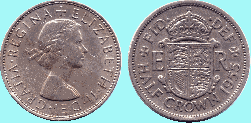
Such was the case in the mid-20th century where, for all ‘silver’ denominations, the last part of the legend (FID:DEF:IND:IMP and later just FID:DEF) was placed on the reverse (Fig. 8).
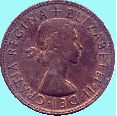
So when Australia informed the London mint they would be changing the design of Australia’s obverses to bring them into line with the newly rewritten titles, the Mint sent copies of the newly redesigned British dies to Australia’s High Commissioner in London for approval – who apparently ‘forgot’ that Australian reverses would not be carrying the FID:DEF, so the wrong dies were then sent on to Australia and our ‘Godless’ coins were struck (Fig. 9).

A lovely theory, quite plausible – except, why then were our pennies and halfpennies also “Godless”? For if the “British die theory” were true, then Australian coppers should have shown F:D on the obverse, just like the redesigned British ones did (Fig. 10). Hmmm. Maybe those who cried “Communist Anti-British Conspiracy” and “Blatant Catholic Vote-buying” had some justification to think this way. Or maybe the Royal Mint just wanted all the Australian coin obverses to be consistent. Or perhaps they simply forgot. After all, out of dozens of coin-issuing dominions and territories, Australia was the only one besides Britain itself to include F:D in the legend.
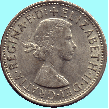
In any event, there was considerable public outcry following the release of the coin designs, which some of our older members may remember. Questions in federal parliament, letters and editorials in the papers, denouncements from high-ranking Anglican clergy – the end result was the almost total shutdown of Australian coin production for a few years until new dies trickled over from London. Apparently Prime Minister Menzies personally intervened to ensure that the “Faithful” florin dies were procured in time for the 1954 Royal Visit commemorative! (Fig. 11).
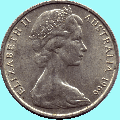
Another curious observation about Australian coins is this: unlike Britain and Canada, the Australians tried it again only 12 years later, this time deleting from the coinage all references to God. This time, they got away with it with hardly a whimper from Church or public. Of course, ‘this time’ was 1966 (Fig. 12). I suppose with decimalization everyone had more to worry about than how agnostic our new coins were.
References:
Coin Year Book 1982
Australian Coin & Banknote Market Guide by Greg Macdonald, 1987
Standard Catalogue of Canadian Coins by Charleton Press, 1983
“Royal Titles and Australian Coins: The Defender of the Faith Controversy of 1953”, NAA Journal No. 3, p.12
This article first published in the September 2001 Magazine
